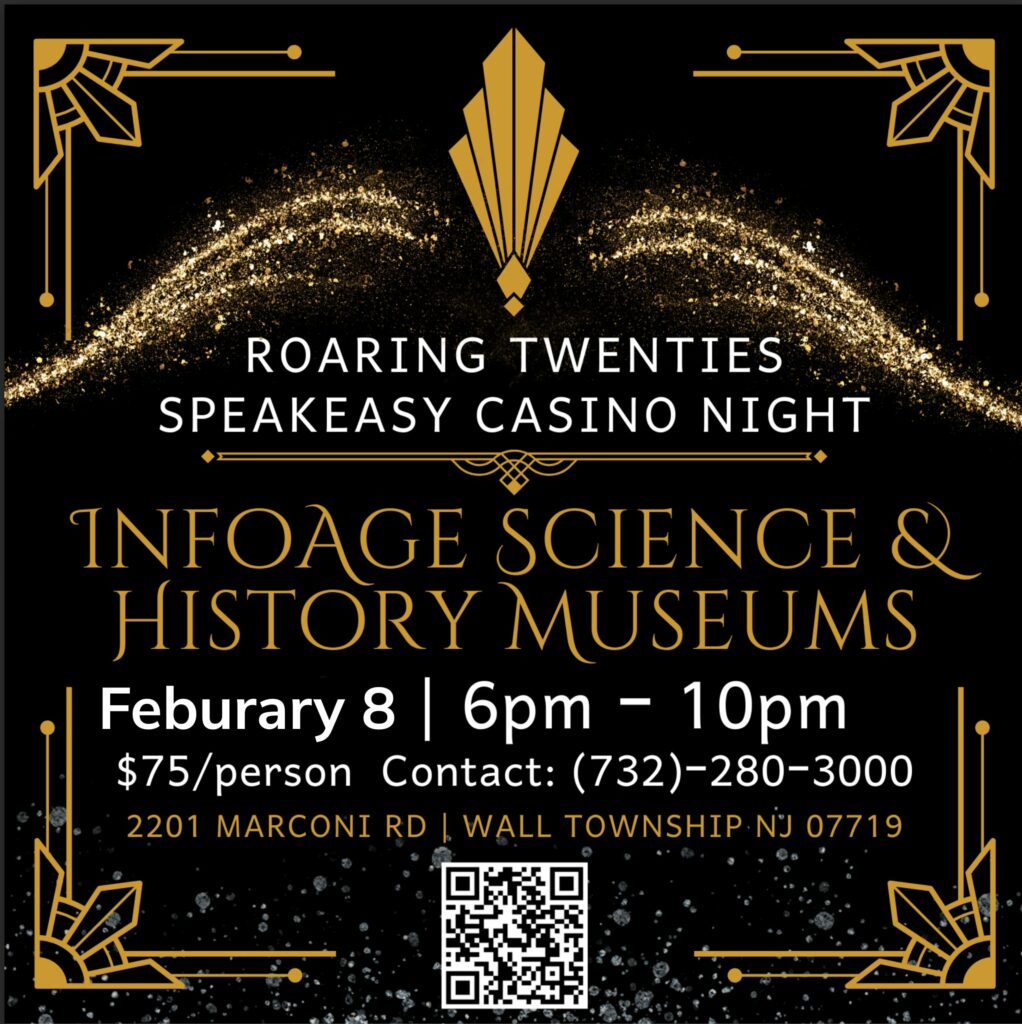The History of InfoAge Science & History Museums
World War II & Radar - Camp Evans technology helped defeat Axis powers in WWIICamp Evans technology helped defeat Axis powers in WWII
published in The Coast Star June 3, 2004 page 9, cont. page 25
This past weekend, the long-overdue World War II memorial was opened in Washington, D.C. This has happened just prior to the 60th anniversary of the Allied invasion of Nazi-controlled Europe on the most famous of D-days, June 6, 1944.
Wall Township and Monmouth County have the opportunity to create a memorial to the talented veterans and civilians who helped win that war and lay the foundation for the advanced electronics and communications systems we depend upon today.
Why a World War II memorial at Wall’s Camp Evans? Camp Evans is thousands of miles from the battlefields of the war and an ocean away from the Normandy beaches of France.
The answer is simple. Camp Evans was a major player in the intellectual battle of Allied ingenuity against the talented and determined scientists of the Axis nations. Camp Evans was the World War II home of Army radar and electronic countermeasures. Camp Evans personnel were secretly supporting and learning from the British before the Japanese attack on Pearl Harbor. Once the United States entered the war, Camp Evans personnel and equipment were involved in every theater of war, from the first day until the last. Equipment designed at Camp Evans and manufactured by the American industry was used by all Allied Forces, not just the British, but also the Soviets and Chinese.
This June 6 marks the 60th anniversary of the Normandy invasion. We will look at a few of the many ways Camp Evans supported that strategic victory. Camp Evans equipment and selected personnel were involved in the planning, radar diversion, landing For the planning of D-Day, Camp Evans developed and supplied specially designed radio transmitters for Allied spies in Prance to send information to help with invasion planning. The transmitters were built into suitcases to fool the Nazi Gestapo. Camp Evans built and tested special radio beacons to guide commandos to the correct landing and pickup point on the French coast.
The Nazi’s had dozens of radar installations along the so-called “Atlantic wall.” Hitler and Field Marshal Erwin Rommel depended upon the unblinking eye of radar to warn of the Allied invasion they knew was coming. Once radar spotted the invasion fleet the Nazis planned to kill it on the beach with the feared divisions of Panzer tank corps. Camp Evans supported the Allied radar diversion by helping design and test equipment to pin-point the Nazi radars for bombardment. The camp also made equipment to jam Nazi radar and equipment to make ghost fleets of ships and planes appear on Nazi radar. During the early hours of the landing, Nazi radar operators reported invasion fleets miles away from Normandy while the radars that survived bombardment near Normandy were blinded by radar jammers. The radar diversion and other Allied tricks confused the Nazis to the point they delayed the movement of their Panzer divisions until it was too late to kill the invaders on the beach.
To protect the landing beaches. from attacks by Nazi fighter planes, a special team at Camp Evans built the Allies’ first light-weight radar. The 1,200-pound units were able to be carried in parts on a landing craft. The radar could be assembled in 30 minutes. To meet the projected June invasion date a team built 12 units in building 9020 at Camp Evans. The team trained the Army operators while building the units. The units and men were flown to England in time for the invasion.
Other larger Camp Evans radars came ashore later in the invasion to help in the beach breakout. A specific example. is the SCR-584 microwave radar. Camp Evans personnel designed this MIT and British breakthrough radar to fit within a single waterproof 30 foot Army trailer. In the high surf of D-Day and enemy counter fire, some of these radar units were floated onto the beach after their transport crafts sunk. These new radars could be connected to four anti-aircraft guns. They helped give the Allies air superiority for the thrust inland and for the balance of the war.
Selected Camp Evans personnel were sent to be part of the invasion force. The equipment was critical for specially trained people who went ashore to repair the radios and radars. They also did the first analysis of any captured enemy radios and radars to report back to Camp Evans on how the enemy equipment could be disrupted.
In the history of WWII, Camp Evans is an important place. Historians call WWII the “Radar War.” The British call radar “the invention that saved democracy.” Now is the time to save this unique historic site as a WWII memorial to those who helped win WWII with advanced electronics. Our children can learn how science can benefit society in the very same buildings were WWII engineers helped save democracy. Could there be a more fitting memorial?
[Fred Carl is the director of the InfoAge Learning Center at Camp Evans.]
page created July 10, 2004
We Need Your Help! Volunteer with Us.
Join our mission to preserve historic Camp Evans and teach the public about science and history.
Sign up to join our team of volunteers and start on your own mission today.
InfoAge Science & History Museums
2201 Marconi Road
Wall, NJ 07719
Tel: 732-280-3000
info@infoage.org
webmaster@infoage.org

